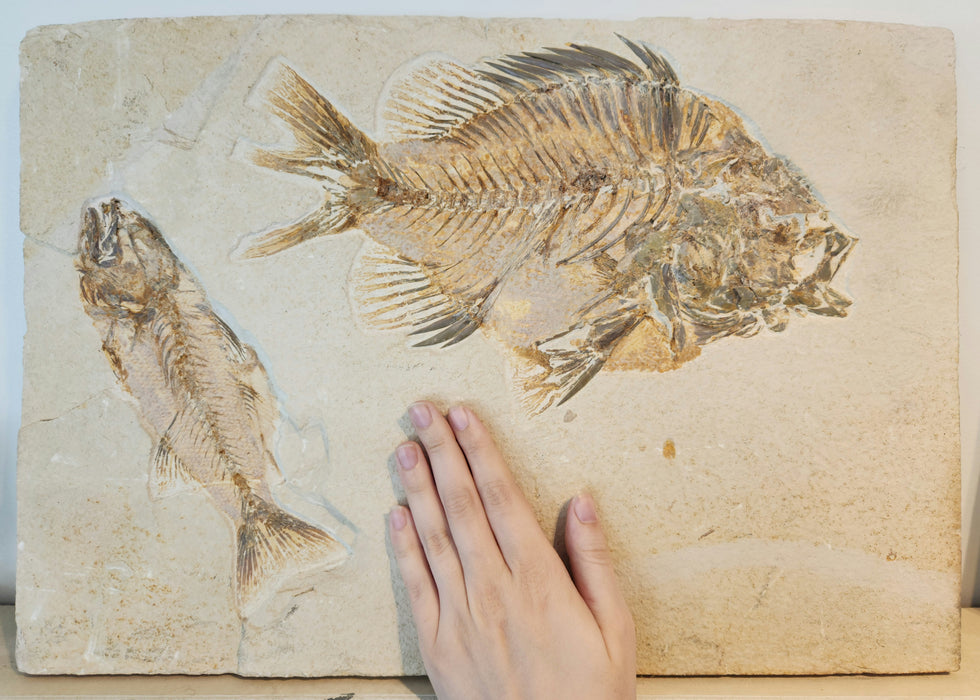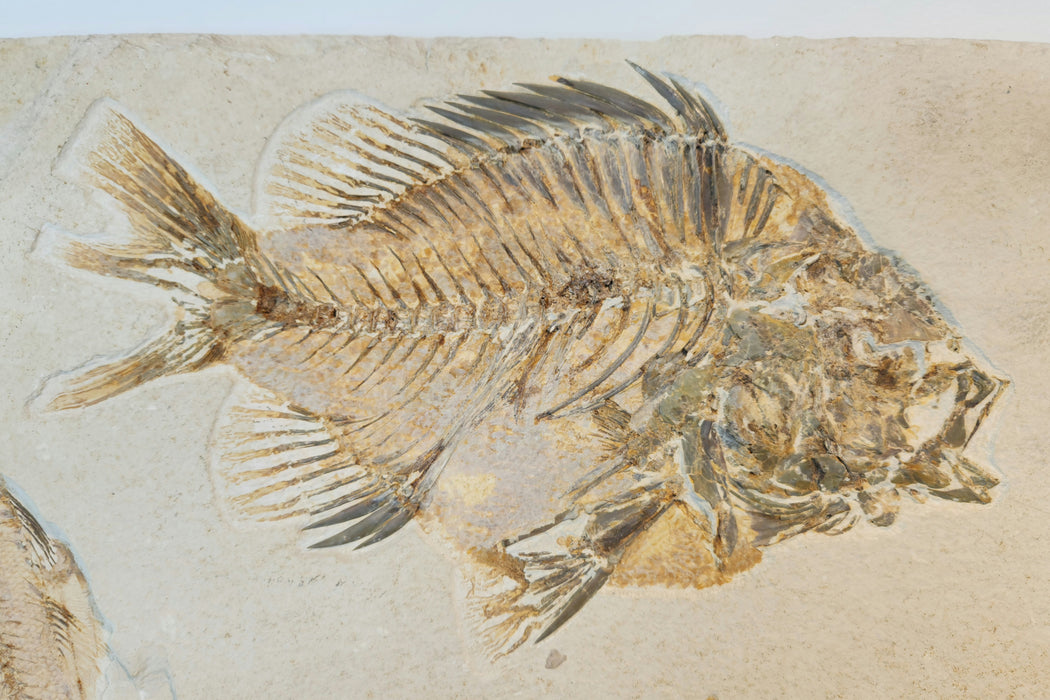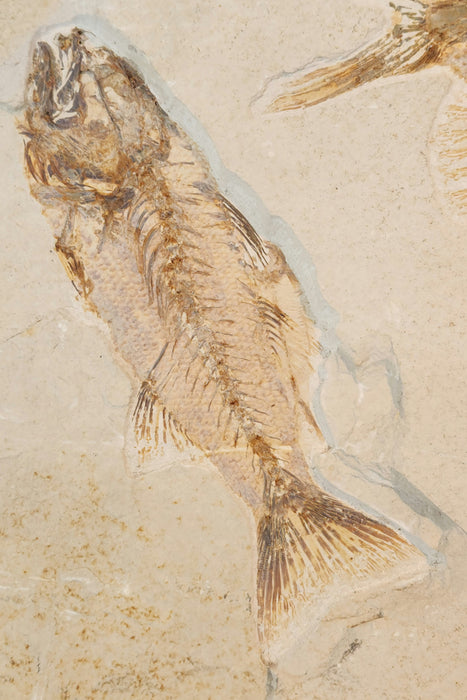
Huge Priscacara serrata and Mioplosus labracoides | Green River Formation | Wyoming
Priscacara approx. size: 12.5"
Mioplosus approx. size: 9"
Plate approx. size: 19" x 13.5"
Order Perciformes
Family Moronidae - C. liops, P. serrata, H. hypsacantha, and undescribed Priscacara & Hypsiprisca species
P. serrata is perhaps the most popular and sought after of the Green River Formation fish fossils. The Moronidae are a family of perciform fishes, commonly called the temperate basses. P. serrata is an uncommon find compared to Cockerellites liops, which are often confused without proper examination and preparation. P. serrata are typically larger than C. liops. The best preserved fossils are extracted from the famous "18-inch Layer" on either very sunny days or at night under halogen lights. The reason for this is because a fine layer of limestone shale covers the fossils, and we need to see protruding backbones cast a shadow in order to find the fossils
Order Perciformes
- Family Latidae - M. labracoides
M. labracoides specimens:
- are characterized by 2 dorsal fins and a moderately forked, fan-shaped tail fin
- known to reach 20 inches
- juveniles commonly found in mass mortalities and adults found alone, indicating M. labracoides traveled in schools as a juvenile and became solitary as an adult
- juvenile and adult specimens often found preserved with smaller fish in the jaw or stomach



